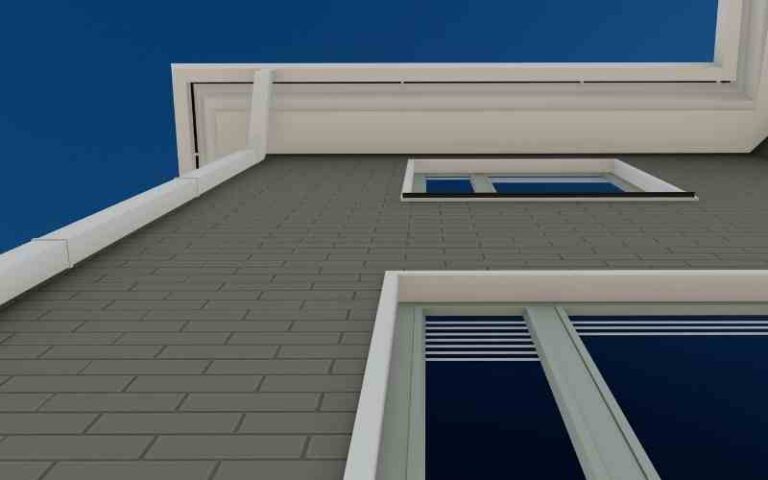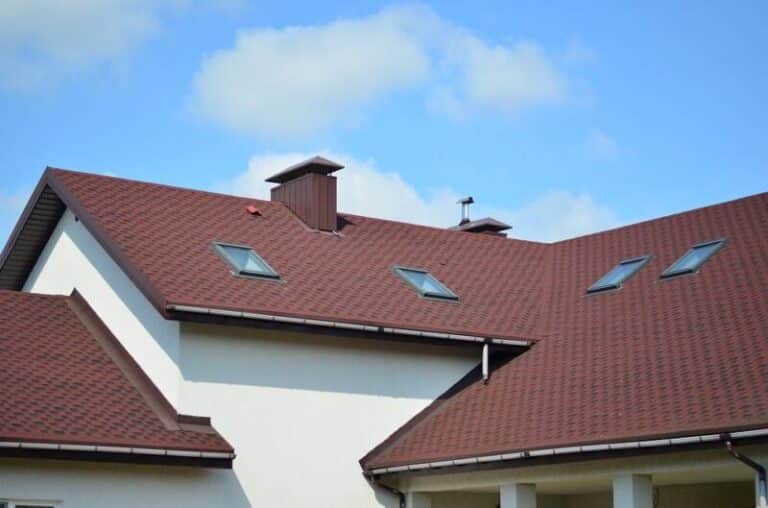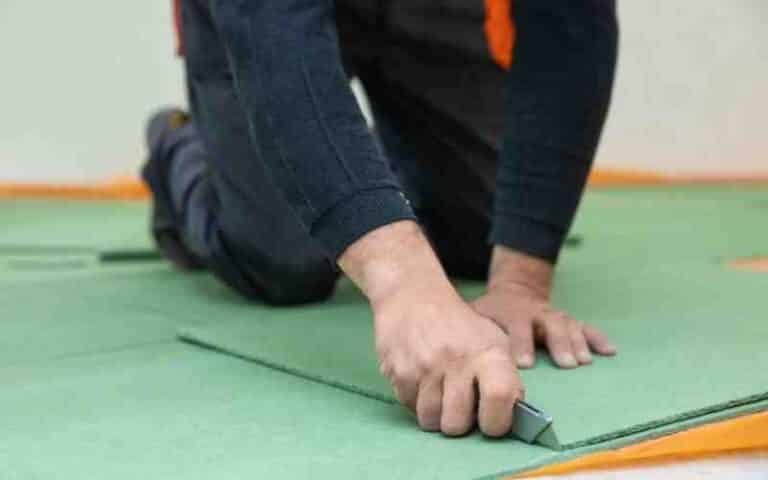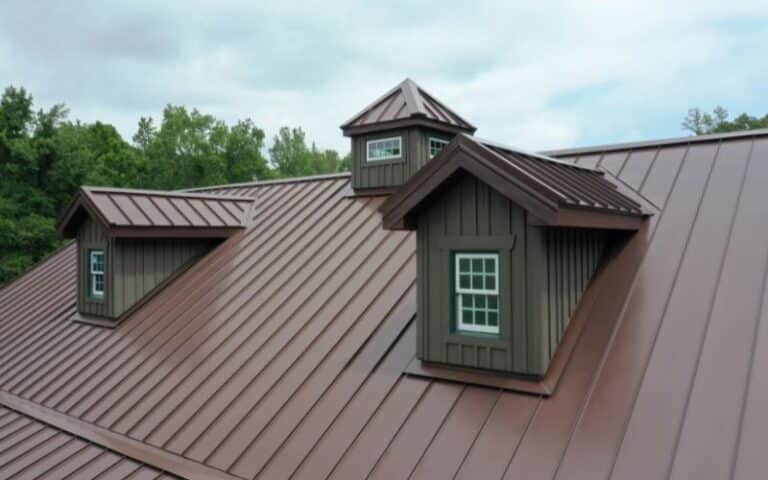Steel I-beams are components of industrial structures such as bridges, cranes, and warehouses.
They are vital in constructing every steel building and framing project because they support the walls, columns, and girders that make up each structure.
They’re so essential that knowing how to fasten them properly is essential when it comes to building anything with steel components.
In this article, I’ll explain what you need to know about fastening materials to “steel I beam.”
Fastening to “steel I beam” refers to connecting steel beams to other steel beams or other structures using fasteners, such as bolts and screws. Steel I beams can be connected in various ways depending on the beam being used in construction. Follow the manufacturer’s guidelines to ensure a firm connection when fastening to steel-I beams.
Ready for a Roofing Quiz?
How Do I Fasten Materials to Steel I Beams?
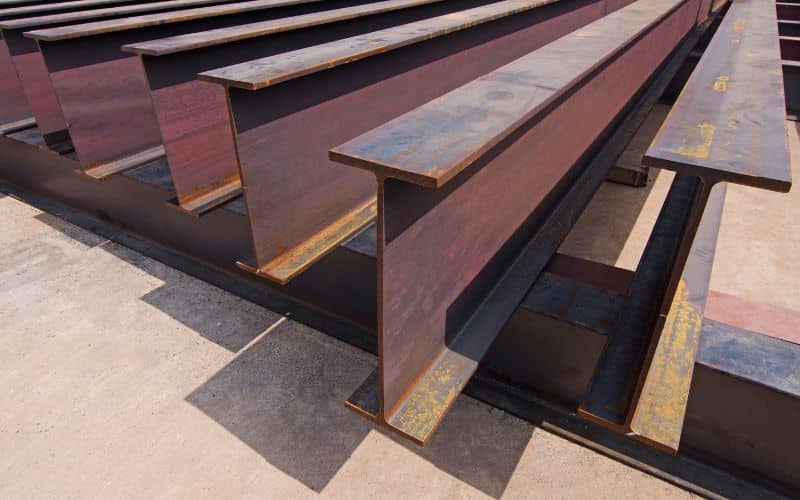
When fastening materials to steel I-beams, you must choose the right type of fastener for your application.
There are various fasteners and ways of fastening materials to steel beams, such as screws, bolts, welding, and clamping.
Steel I-beams are typically used in construction and mechanical applications. They’re fabricated with top and bottom flanges.
Welding to fasten a material to steel I beam is time-consuming, and you have to ensure you are good at welding before you can use this approach for fastening materials to the steel I beam.
In addition, proper dressing is required so you do not injure yourself in the welding process and ensure you have a work permit.
Before doing this, you have to do the welding process outside and be on the lookout for the weather.
You can use bolts to fasten materials to steel I beam. For example, you can fasten wood to the steel I beam using bolts.
When using a bolt, you have to penetrate the flange, which is time-consuming and stressful because you have to drill it in.
You have to drill into both ends of the steel I beam so the bolt can go through before using the nuts and washers.
When fastening materials to the steel I beam through clamping, you need access to both sides of the beam. Therefore, using clamping materials is more expensive and has a limit in direction.
You can use the self-drilling screws to fasten the material to the steel I beam. Then, you place a screw in the screw gun to penetrate the beam and make your connection.
When fastening materials to steel I-beams, you must choose high-quality stainless screws, bolts, or whatever fastener you choose.
Can You Screw Into a Steel Beam?
Yes, you can screw on a steel beam, but first, you must drill holes into it before you can screw it. Then, it would be best to use a suitable drilling machine to go through the steel beam.
Also, you can use a self-drilling screw to screw into a steam beam. When using this method, you need the self-drilling screw and a drill driver.
Place the screw in the driver; the screw will drill its hole and tap the thread. Just ensure you use screws thick enough for your steel beam.
Here are some drills you can use to drill a hole into a steel beam, after which you can screw;
- Core drill.
- Twist drill.
- Step drill.
- Cordless drill.
#1. Core Drill
You can use a core drill to drill into a steel beam and make large holes. When you have a big diameter, you don’t have to drill through the surface, so it takes less time.
#2. Twist Drill
You can use a twist drill if you do not have a core drill. However, you should always pre-drill with a lesser diameter for holes of 6 mm or more when using twist drills.
With, say, a 16 mm diameter, you should pre-drill the hole at least twice. Using a twist drill will take a lot longer and won’t get the job done well.
#3. Step Drill
Step drills make holes in metal sheets up to about 4 mm thick. But, when using the Ultimatecut step drill, each step on the Ultimatecut step drill is 10 mm long.
As it takes so many steps, you can do something other than pre-drilling. That means you don’t have to change tools, and with bigger diameters, you can save up to 75% of your time.
#4. Cordless Drill
After inserting the drill bit with a cordless drill bit, you can drill into the steel beam. First, of course, you have to consider the pressure and speed of rotation you apply to it when drilling.
Apply lots of pressure when using a cordless drill for a steel beam. Ensure you set the speed of rotation to slow before you start drilling.
When drilling, take caution and do not wear gloves to prevent an accident, but you can use safety glasses.
Related: Screws Or Nails For Vinyl Siding
What Are the Best Screws for Steel I Beams?
When choosing the best screw for steel I-beams, one should consider the type of hole needed. However, the best screw for screw I beam is the Tek-5 screw.
The Tek screw is the first self-drilling screw to fasten materials to steel beams. The screw is thick enough to drill into the screw I beam and also saves time of drilling into it.
Other self-drilling screws are available in the market you can use for screw I beam. However, Tek-5 self-drilling screw is the best screw for screw I beam.
Although you can use these screws in various applications, you can also use them for steel beams.
You can also use a self-tapping screw for the screw I beam, only this process isn’t as easy as using the self-drilling screw.
When using a self-tapping screw, you have to make a pilot hole before you can drill into the steel beam and use a screwdriver to screw the self-tapping screw.
This process is time-consuming, and you have to be careful not to make mistakes as you must drill a hole smaller than the screw so it will fit.
These self-tapping screws are of different sizes and heads, so ensure you get one thick enough to penetrate your steel beam and check the head well before drilling.
Choosing one that is right for your application before you start using them is essential so that they do not back out or break easily during use.
Related: Patch Screw Holes In Roof
Are Self-drilling Screws More Efficient For Steel?
Yes, they are more efficient for steel. That’s because you can use it without pre-drilling, which reduces installation time and gives a more precise installation. You can use self-drilling screws on any metal, including stainless and galvanized.
The table below shows what makes self-drilling screws more efficient for steel.
| Reasons | Description |
|---|---|
| Time-saving. | They don’t need pre-drilling; they drill and fasten themselves, saving time. |
| Corrosion resistant. | Stainless steel is corrosion-free and long-lasting. |
| Durability. | They resist weathering better, increasing screw durability and reapplications. |
| Less preparation. | You do not need to drill or waste time preparing when you can do something else. |
| Improved efficiency. | They need minimal material preparation and drills efficiently. |
Conclusion
In summary, screws, bolts, and other fastening methods are used to fasten materials to steel beams. Although, the time for these fasteners differs from each other.
However, it is more efficient when using a self-drilling screw as a fastener, saving time. Ensure you use screws that are thick enough to penetrate the steel beam.


